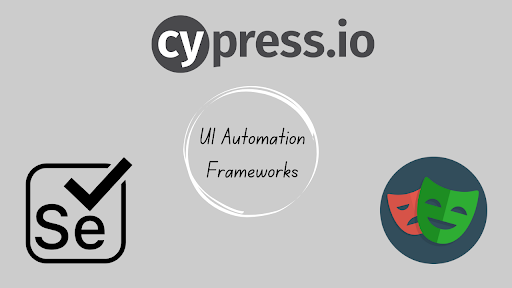Comparison of UI automation frameworks and what’s best for each use case!
 Sakshi from KushoAI
Sakshi from KushoAI
This blog is written by Akshat Virmani at KushoAI. We're building the fastest way to test your APIs. It's completely free and you can sign up here.
Testing has become a major part of software development in the growing world of technological advancement. Whether you are testing your APIs through Kusho AI or the UI elements of an application, testing has become a cornerstone of the IT industry. Many testing platforms have made development tasks easy by automating testing. Developers can use these tools in their applications to save time and effort on elements that the tools or frameworks can do instead of doing it manually.
This article will cover what UI automation is and the comparison between one of the most popular UI automation frameworks out there.
What is UI Automation?
UI Automation Frameworks are software tools and libraries that automate application user interface (UI) testing. These frameworks create and execute tests to ensure the UI behaves as expected from the user’s perspective. This enables developers and teams to efficiently and effectively verify the quality of their applications.
UI Automation helps you to:
Save time and money on manual testing.
Fast testing and low chances of errors
Increases test coverages like edge cases.
Low maintenance cost
Comparison between UI automation frameworks: Selenium, Playwright, and Cypress
Selenium, Playwright, and Cypress are some popular UI automation frameworks. Let’s examine how these frameworks differ.
Selenium:
Selenium is the oldest and most widely used open-source framework for automated testing of web applications across various browsers (Chrome, Firefox, Safari, etc.) and platforms. It supports multiple programming languages, including Java, Python, C#, Ruby, and JavaScript.
Best For:
Cross-browser testing: Selenium is highly effective for running tests across different browsers and platforms.
Complex test cases: Selenium's wide compatibility helps you run tests that involve interactions with multiple systems or browsers.
Large, enterprise-level applications with many testing requirements, especially in diverse environments.
Playwright:
Playwright is an open-source automation library developed by Microsoft to test modern web applications across multiple browsers. It allows developers to write JavaScript, TypeScript, and other languages to create new browser pages, navigate to URLs, and interact with page elements. The features that make Playwright stand out are its speed and performance. Being a Microsoft product, its seamless integration with Visual Studio Code is another plus, making it incredibly efficient for development workflows.
Best For:
Cross-browser testing with modern features: Playwright is great for testing modern web apps across multiple browsers.
Testing real-time web apps (e.g., using WebSockets or handling GraphQL requests).
Modern web applications require mobile device simulation.
Cypress:
Cypress is a front-end test automation framework for testing web applications. It is a modern JavaScript-based End-to-End (E2E) testing framework designed for modern web applications. Cypress runs on Windows, Linux, and macOS. Developers and QA engineers widely prefer Cypress due to its ease of use, robust features, and ability to automate web application testing efficiently. Cypress has a UI extension; execution time is slow compared to Playwright and Selenium.
Best For:
Testing JavaScript-heavy applications: Cypress works well with frameworks like React, Angular, and Vue.
End-to-end testing: Cypress provides a real-time experience for developers by allowing debugging directly in the browser.
Front-end developers who want fast, easy-to-write tests with real-time feedback.
Small to medium-sized projects with straightforward requirements.
To Conclude
UI automation frameworks play an important role in ensuring the quality and reliability of web applications by automating testing processes. Each framework offers unique strengths, whether compatibility with multiple browsers, ease of setup, or execution speed. While all these frameworks are some of the best on the market, choose the one that best suits your organization and its needs.
This blog is written by Akshat Virmani at KushoAI. We're building an AI agent that tests your APIs for you. Bring in API information and watch KushoAI turn it into fully functional and exhaustive test suites in minutes.
Subscribe to my newsletter
Read articles from Sakshi from KushoAI directly inside your inbox. Subscribe to the newsletter, and don't miss out.
Written by